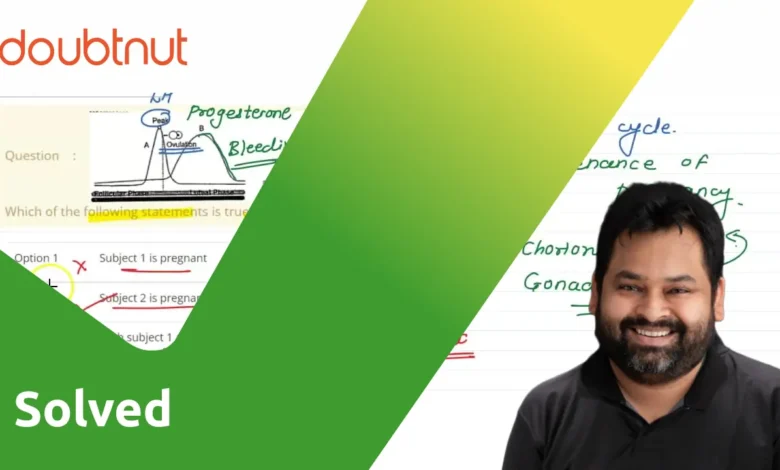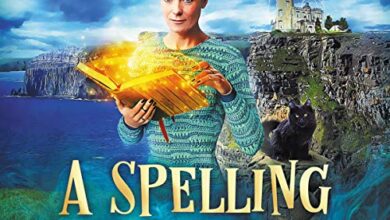Which of the Following Statements Is True? A Deep Dive into Critical Thinking

When faced with the question “Which of the following statements is true?” most people think of multiple-choice tests or tricky riddles. But beyond exams and puzzles, this phrase holds powerful significance in education, decision-making, and even everyday life. It encourages us to pause, compare options carefully, and apply reasoning instead of jumping to conclusions. In this article, we’ll explore why this question matters, how to approach it, and strategies to identify truth in a world full of competing statements.
Understanding the Question
The phrase “Which of the following statements is true?” usually appears in situations where multiple options are given. Only one (or sometimes more than one) of those options reflects reality, fact, or correctness. At its core, the question asks us to:
Evaluate information – Look at the details of each statement.
Compare choices – Check similarities, differences, and contradictions.
Select the correct answer – Identify the statement that best matches truth or evidence.
This kind of questioning is used in schools, competitive exams, quizzes, interviews, and even casual problem-solving exercises. But beyond academics, it reflects the larger human need to separate truth from falsehood in everyday decisions.
Why This Question Matters
Truth-seeking is not limited to classrooms. Every day we are bombarded with information from news, social media, conversations, and advertisements. In such an environment, the ability to ask “Which of the following statements is true?” becomes a survival skill. It helps us avoid falling for misinformation, bias, or manipulative claims.
For example:
In education, it tests comprehension and knowledge accuracy.
In science, it pushes us to verify hypotheses through observation and evidence.
In daily life, it ensures we don’t make poor decisions based on incorrect assumptions.
In critical thinking, it sharpens our reasoning abilities.
Thus, the question is not just about choosing an answer but about cultivating a mindset that values truth and logic.
Common Contexts Where the Question Appears
1. Multiple-Choice Exams
Students often encounter this exact wording in competitive exams. The challenge is not only to know the facts but also to differentiate between statements that are almost true and those that are completely correct.
2. Logical Reasoning Tests
In aptitude exams, candidates may face a set of statements where only one is logically consistent. The exercise trains people to identify fallacies, contradictions, and misleading wording.
3. Quizzes and Riddles
Riddle-makers love to trick readers with statements that sound right but aren’t. Asking “Which of the following statements is true?” becomes a fun test of attention and detail.
4. Workplace Decision-Making
Managers and professionals often evaluate reports, proposals, or claims. They must determine which statements reflect reality before making financial or strategic choices.
5. Media and Information
When we read conflicting news reports, we mentally ask ourselves the same question: Which statement is closest to truth?
How to Approach the Question Effectively
Answering such a question requires more than guesswork. Here are proven strategies:
1. Read Carefully
Examiners or authors often include distractors—statements that look true but have a hidden flaw. Reading slowly helps catch these details.
2. Check for Absolutes
Words like “always,” “never,” or “all” often signal a false statement because reality usually has exceptions.
3. Eliminate Wrong Options
Sometimes it’s easier to spot which statements are false. By eliminating them, you narrow down the correct choice.
4. Look for Supporting Evidence
If you can recall facts, statistics, or real-world examples that support a statement, it’s more likely to be true.
5. Watch for Trick Wording
Some statements may be technically correct but irrelevant to the question. Precision is important.
6. Apply Logic
Even when you don’t know the direct answer, reasoning about relationships and consistency can guide you.
Examples for Practice
Let’s look at a few examples of the phrase in action:
Example 1: General Knowledge
Which of the following statements is true?
The Earth is flat.
The Earth revolves around the Sun.
The Sun revolves around the Earth.
The Earth does not rotate.
Correct Answer: Option 2 – because it matches scientific evidence.
Example 2: Logical Reasoning
Which of the following statements is true?
All cats are animals.
All animals are cats.
Some animals are cats.
No animals are cats.
Correct Answers: Option 1 and 3 – depending on whether the test allows more than one true statement.
Example 3: Everyday Scenario
Your friend says:
I was at the library at 5 pm.
I called you at 5 pm.
I was watching a movie at 5 pm.
Which of the following statements is true? Only one can logically be correct if they happened at the same time.
Correct Answer: Depends on verification through evidence like phone logs or witnesses.
The Role of Critical Thinking
At its heart, this question tests critical thinking—the ability to evaluate and not just accept information. In today’s world of fake news, half-truths, and manipulated facts, being able to answer “Which of the following statements is true?” is vital.
Critical thinkers ask:
Who is making the statement?
What evidence supports it?
Are there hidden biases or assumptions?
How does it compare with other known facts?
By doing so, they protect themselves from deception and make more reliable decisions.
Challenges in Identifying the True Statement
Finding truth isn’t always easy. Several challenges complicate the process:
Ambiguous Wording – Statements can be phrased to mislead.
Similar Options – Multiple choices may look correct at first glance.
Lack of Knowledge – Without background information, it’s hard to judge accuracy.
Bias – Personal beliefs may cloud judgment.
Time Pressure – In exams, limited time can lead to rushed, incorrect choices.
Overcoming these challenges requires practice, patience, and the willingness to question assumptions.
Real-Life Importance of Asking the Question
Even outside exams, people constantly face competing statements. Consider:
News: Two channels give opposite reports. Which is true?
Health Advice: Different doctors recommend different treatments. Which is accurate?
Financial Decisions: Investment options come with conflicting promises. Which is genuine?
Learning to identify truth doesn’t just help in tests—it improves decision-making, protects resources, and builds trust.
Final Thoughts
The phrase “Which of the following statements is true?” might look simple, but it is a gateway to higher reasoning. It pushes us to think carefully, check facts, and seek evidence. In exams, it tests knowledge. In life, it protects us from falsehood.
By developing skills like careful reading, elimination, logical reasoning, and fact-checking, anyone can master this question. More importantly, applying this mindset in everyday situations makes us wiser, more informed, and better equipped to face challenges in a complex world.
So next time you see this question, don’t just look for the right option—recognize it as practice for navigating truth in every corner of life.



